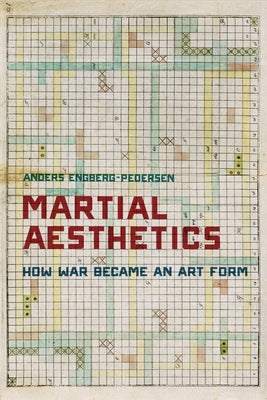Stanford University Press
Martial Aesthetics: How War Became an Art Form
Martial Aesthetics: How War Became an Art Form
Couldn't load pickup availability
The twenty-first century has witnessed a pervasive militarization of aesthetics with Western military institutions co-opting the creative worldmaking of art and merging it with the destructive forces of warfare.
In Martial Aesthetics, Anders Engberg-Pedersen examines the origins of this unlikely merger, showing that today's creative warfare is merely the extension of a historical development that began long ago. Indeed, the emergence of martial aesthetics harkens back to a series of inventions, ideas, and debates in the eighteenth and early nineteenth century. Already then, military thinkers and inventors adopted ideas from the field of aesthetics about the nature, purpose, and force of art and retooled them into innovative military technologies and a new theory that conceptualized war not merely as a practical art, but as an aesthetic art form. This book shows how military discourses and early war media such as star charts, horoscopes, and the Prussian wargame were entangled with ideas of creativity, genius, and possible worlds in philosophy and aesthetic theory (by thinkers such as Leibniz, Baumgarten, Kant, and Schiller) in order to trace the emergence of martial aesthetics. Adopting an approach that is simultaneously historical and theoretical, Engberg-Pedersen presents a new frame for understanding war in the twenty-first century.
Author: Anders Engberg-Pedersen
Publisher: Stanford University Press
Published: 03/07/2023
Pages: 216
Binding Type: Paperback
Weight: 0.65lbs
Size: 8.90h x 5.90w x 0.50d
ISBN: 9780804799942
About the Author
Anders Engberg-Pedersen is Professor of Comparative Literature at The University of Southern Denmark, and Chair of Humanities at the Danish Institute for Advanced Study. He is the author of Empire of Chance: The Napoleonic Wars and the Disorder of Things and editor of numerous volumes on war.
Share


